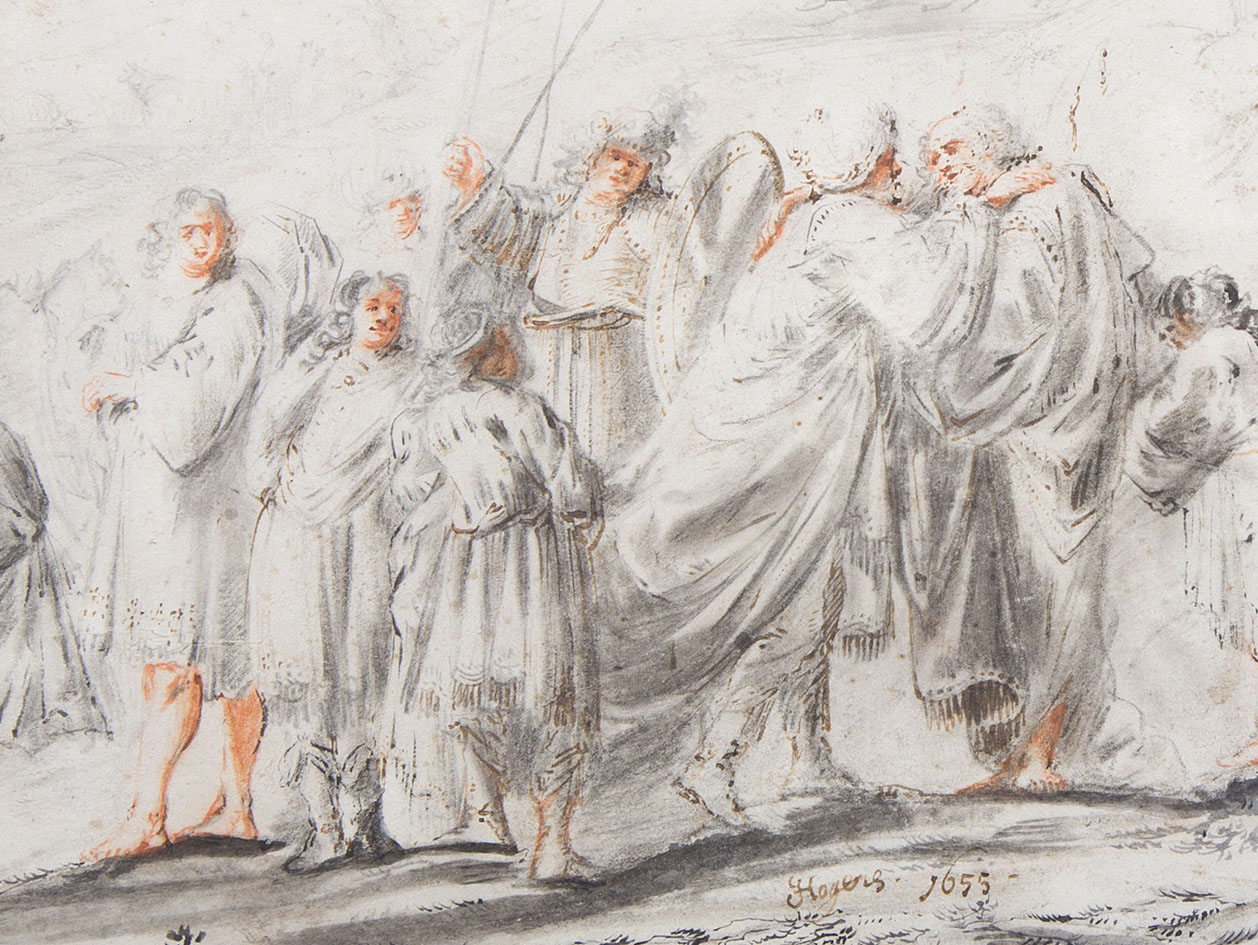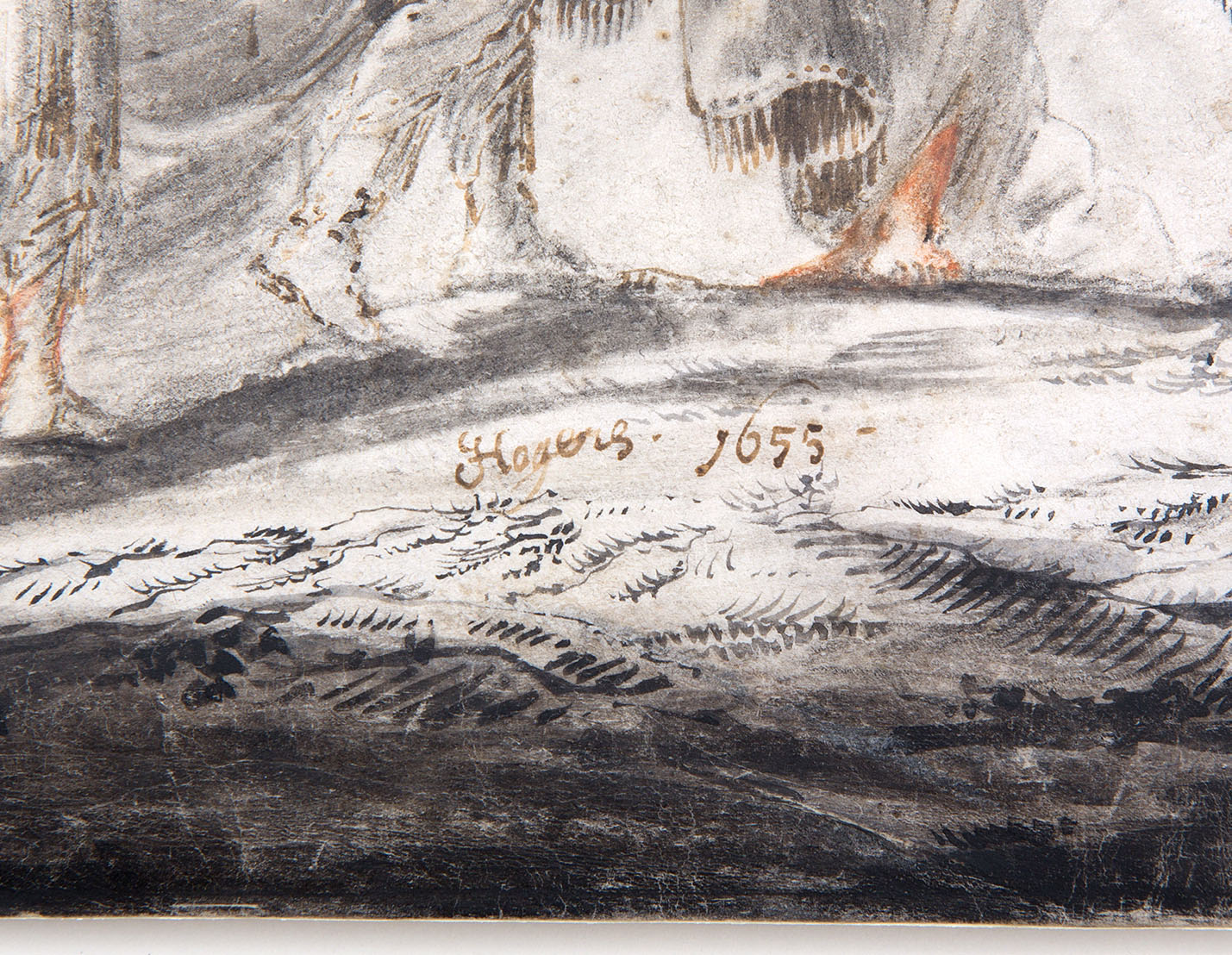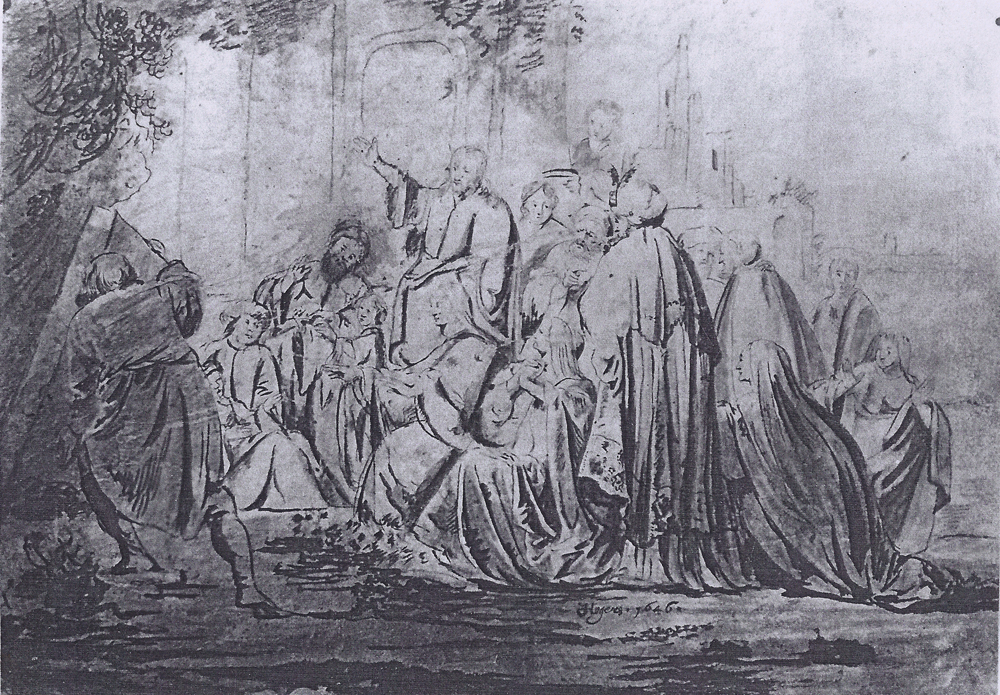JACOB HOGERS (Deventer 1614 – after 1652)
Jacob Hogers (Deventer 1614 – after 1652)
Jacob Reunited with Joseph
Pen and grey ink, grey wash, red chalk, on vellum, 235 x 325 mm (9.3 x 12.8 inch)
Signed and dated ‘Hogers 1655 - ’ (lower centre)
Provenance
~ With dealer Wiegersma, Utrecht, 1941
~ Mr Taco Mesdag (1882–1956), Zwolle, 1955
~ Paul Brandt (1900–1984), Amsterdam, and by descent until 2018
Literature
B.J.A. Renckens, ‘Jacob Hogers’, Oud Holland, LXX (1955), p. 65, no. 22
Exhibited
~ Tentoonstelling van zeventig Hollandse tekeningen der 16e en 17e eeuw uit de collectie Paul Brandt, Alkmaar (Stedelijk Museum) 1960-61, cat. no. 29
~ Nederlandse tekeningen der zestiende en zeventiende eeuw: catalogus van een keuze uit de collectie Paul Brandt, Utrecht (Centraal Museum) 1963, cat. no. 40
~ Nederlandse tekeningen der zestiende en zeventiende eeuw: een keuze uit de collectie Paul Brandt, Dordrecht (Dordrechts Museum) 1968, cat. no. 54
***
Hogers is an enigmatic artist by whom few works survive. He is not mentioned by early biographers such as Houbraken and Van Gool, and only came to scholarly attention in the late 19th century, when the Rijksmuseum acquired his masterpiece, Jacob and Esau.1 The main account of his life and works remains the article by B.J.A. Renckens published in 1955,2 in which the present drawing was included.
Hogers was born into a patrician and learned Deventer family and seems to have studied in Haarlem, as his known oeuvre displays the influence of artists such as Pieter de Grebber (c.1600-1652/53) and especially Gerrit Claesz Bleker (c.1600-1656). Later paintings show an awareness of Rembrandt, with whose school he is sometimes associated. Hogers married in Amsterdam in 1641, and returned to Deventer shortly afterwards, where he specialised in the sophisticated genre of history painting, scenes from the Bible and Classical authors.
Our beautifully preserved sheet is typical of Hogers’s drawn oeuvre: all his known drawings are executed on vellum, in pen and wash in grey or black, and with accents in red on hands and faces, and take subjects from biblical history as their inspiration. About a dozen drawings are known, most in international museums. Our drawing may be compared to the Raising of Lazarus in the Rijksmuseum, Amsterdam (fig.).3 Hogers’s drawings must have been highly valued during his lifetime: the Deventer mayor Wilhelm Gelinck owned no less than six drawings on vellum by the artist.4
SOLD
1. Oil on canvas, 160 x 229 cm, signed and dated 1655; inv. no. A1498; P.J.J. van Thiel, All the paintings of the Rijksmuseum in Amsterdam, Amsterdam 1976, p. 281, repr.
2. B.J.A. Renckens, ‘Jacob Hogers’, Oud Holland, LXX (1955), pp. 51-66.
3. Vellum, 220 x 284 mm; signed and dated 1646; inv. no. RP-T-1922-36; see Renckens, p. 65, no. 17, repr.
4. Inventory of 12 July 1672; see Renckens, p. 65.




